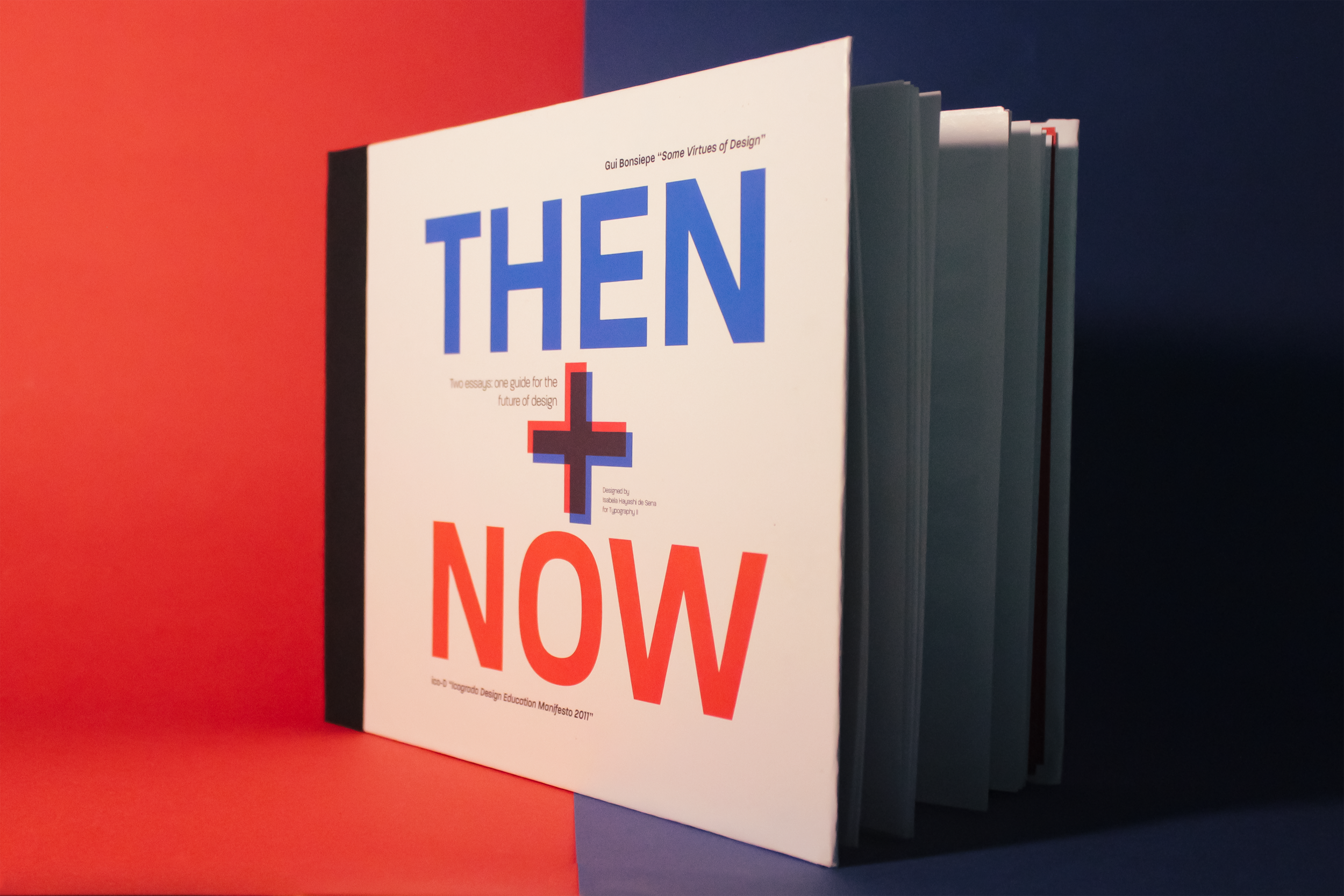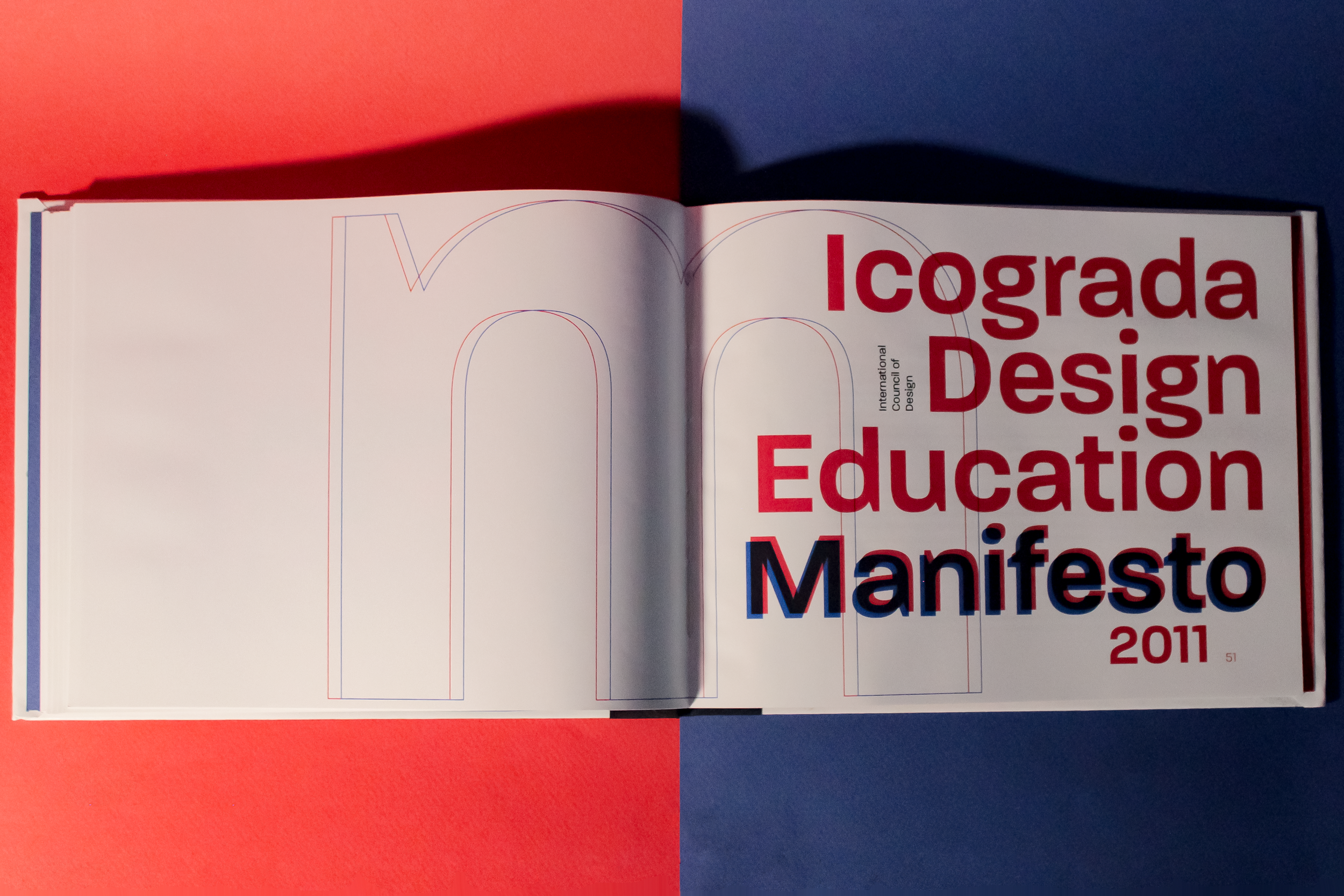
THEN + NOW
Two essays: one guide
for the future of design
Creators should care about the future of visual communication. After all, no one wants to dedicate their entire career to a dead industry. So how can we keep it relevant and thriving in the years to come? The answer is simple: investing in education and research within the industry, expanding its horizons while analyzing its shifts and trends.
book design; graphic design; page layout; typography; digital design; art direction; print production; binding.
But some things never change. For instance, the elements and principles of design. And besides those, other practices should be taken into consideration. What about virtues, values, matters to stand for?
I decided to assemble a book reflecting on the statement and questions introduced previously by juxtaposing the following texts: “Some Virtues of Design,” by Gui Bonsiepe, and “Icograda Design Education Manifesto 2011,” by ico-D.
Written in 1998, "Some Virtues of Design" by Gui Bonsiepe enlists 6 Memos in visual communication for the Next Millennium. Which includes common values from the 19th century that should still be relevant in the times we live in now.
And not coincidentally, Bonsiepe, being the renowned designer and educator he is, was a member of the Council's 2010 Manifesto Steering Committee, organized by the now called International Council of Design, or simply ico-D. They published the “Icograda Design Education Manifesto 2011,” which is included at the end of the book.







By creating this book, I intended to compare past virtues, values, and matters with what we expect from design nowadays. And by reading both texts, I came to the obvious conclusion that things have changed since the last millennium. But some haven't changed at all, and others have evolved.
Every day, visual communication grows.
And, by absorbing the past, we can create a better tomorrow.
Click on the button to read the full version of the book.
CREDITS to authors are found on pages 61 and 62 of the book.
Art direction, poem curation, translations and editions, book design, photography: Isabela Hayashi de Sena.









